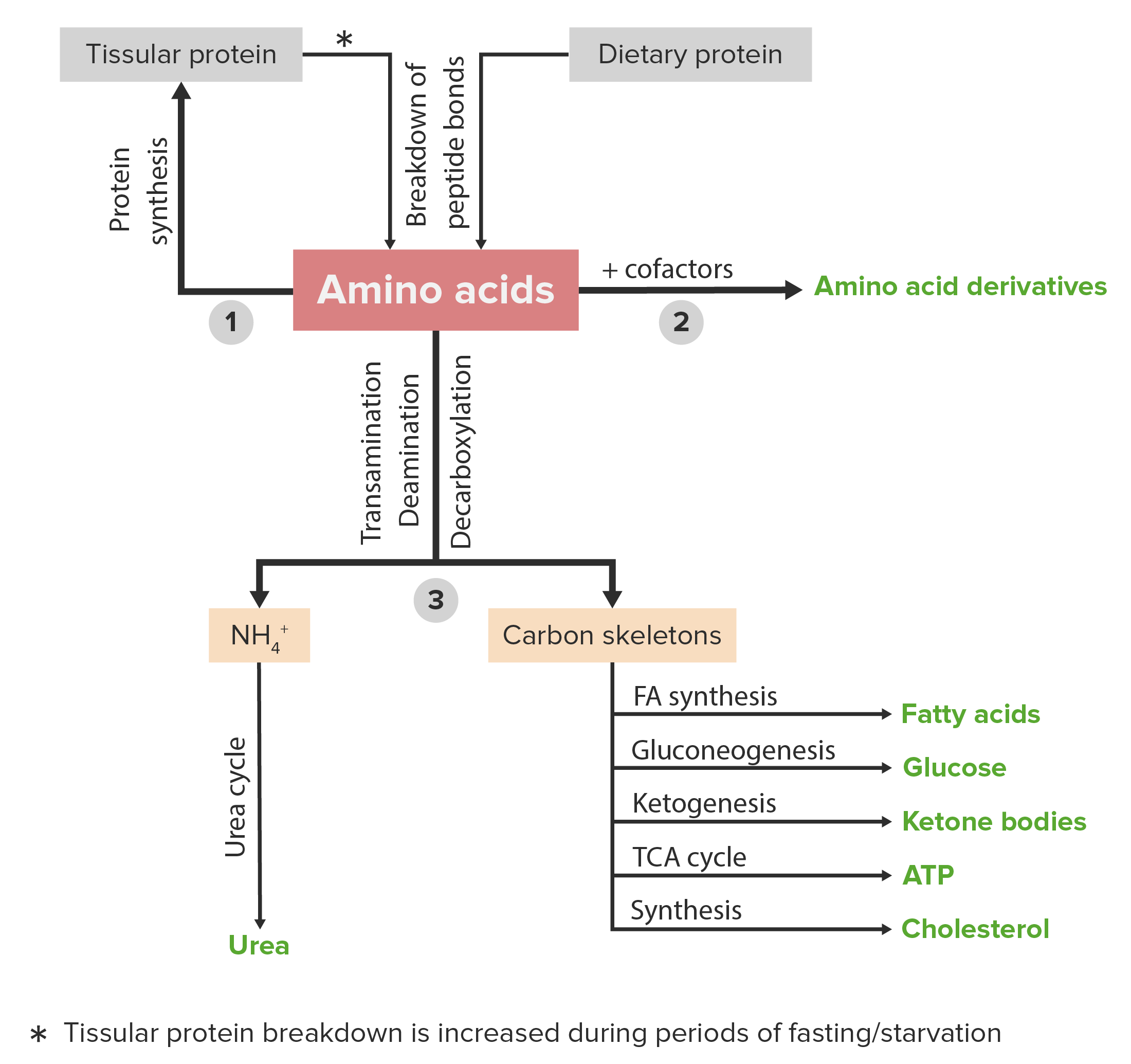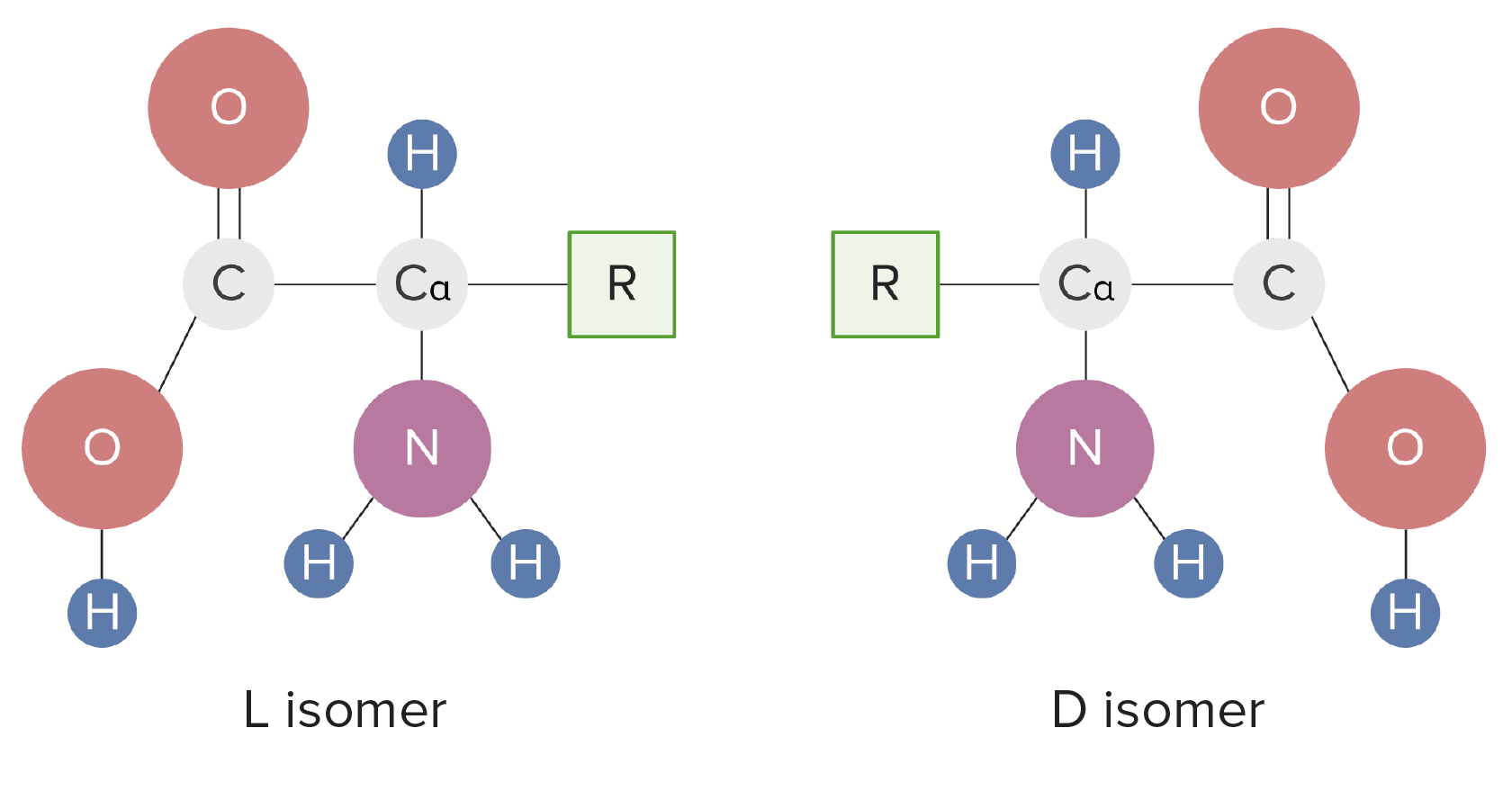Playlist
Show Playlist
Hide Playlist
Aromatic Family: Tryptophan
-
Slides AminoAcidMetabolism Biochemistry.pdf
-
Reference List Biochemistry.pdf
-
Download Lecture Overview
00:02 The aromatic family is next stem we will consider, the synthesis of. 00:06 These include the amino acids: tryptophan, phenylalanine and tyrosine. 00:12 Each of these amino acids is derived from some very simple precursors. 00:17 Phosphoenolpyruvate which is an intermediate in the glycolysis pathway and erythrose-4-phosphate which is an intermediate from the pentose phosphate, phosphate pathway. 00:27 The synthesis pathways are complex. 00:29 And again, I'm not going to go into individual reactions other than to show you the schematic that we see here. 00:35 Each of the synthetic pathways involves the production of shikimic acid and chorismic acid. 00:40 We can see the chorismate or the chorismic acid in the schematic here. 00:44 Phenylalanine and tyrosine pathways overlap because tyrosine can be produced directly from phenylalanine. 00:51 It can also be produced independently of it as well. 00:55 Hormones and neurotransmitters are made from each of these amino acids. 00:59 So this aromatic family has a lot of connections to other things that cells need. 01:05 Now the synthesis of tryptophan is interesting. 01:07 Its regulated synthesis in bacteria has a very interesting mechanism known as attenuation. 01:14 Attenuation is a way of controlling an entire operon. 01:17 Now an operon is a set of five genes. 01:20 Making five genes takes a lot of energy. 01:23 So cells only want to be synthesizing those five genes to make tryptophan when tryptophan is itself needed. 01:29 If tryptophan is available, making those genes waste energy. 01:34 So they have involved a way of controlling whether or not those five genes are made or not made depending upon whether tryptophan is present or not present. 01:43 When tryptophan concentration is high, then the transcription of the operon to make those five genes actually aborts. 01:50 It starts, but it aborts. 01:53 That prevents these five genes from being made and saves energy because tryptophan is available. 01:59 When tryptophan supply is slow, that aborted process does not occur. 02:04 The entire transcription of the entire operon occurs. 02:07 So this process is attenuation. 02:09 Very interesting way of controlling synthesis of a set of genes. 02:15 The molecules made from tryptophan are shown in the screen here. 02:18 They include melatonin. 02:19 And melatonin is important for circadian rhythm sensing. 02:24 It affects our mood, it affects our sleep, affects our blood pressure. 02:28 Melatonin is used in some sleeping treatments actually. 02:33 The production of melatonin, we know now, is affected by blue light. 02:38 And the more blue light we have, especially later in the evening, the less melatonin we produce. 02:44 The less melatonin we produce, the more sleeping difficulty we have. 02:48 So one suggestion people have is not to use your computer monitor too much at night or to use a computer program that actually reduces the amount of blue light being produced by your computer screen. 03:00 Serotonin is what people refer to as the happy hormone. 03:03 It's a neurotransmitter. 03:04 It causes vasoconstriction, which actually increases blood pressure, and then enhances memory, learning and it's a contributor to happy feelings. 03:13 When you're feeling well, feeling happy, you're probably producing serotonin. 03:19 Niacin we can see is one of our vitamins. 03:21 It's known as vitamin B3. 03:24 It's important component of nicotinamide. 03:27 And nicotinamide is used to make NAD, NADH, NADP, and NADPH. 03:33 A deficiency of vitamin B3 is very severe and leads to the disease known as an pellagra. 03:40 The last of the molecules made from tryptophan is that the auxins. 03:43 There are families of molecules and indole-3-acetic acid is the most important and the most common one. 03:49 It is a plant hormone and was in fact the first plant hormone that was discovered. 03:54 It's used in plants to stimulate cell division and causes rooting in the plants.
About the Lecture
The lecture Aromatic Family: Tryptophan by Kevin Ahern, PhD is from the course Amino Acid Metabolism.
Included Quiz Questions
Which is true of the aromatic amino acid family?
- Each member is synthesized from phosphoenolpyruvate (PEP) and erythrose 4-phosphate.
- The aromatic amino acid family includes phenylalanine, tyrosine, and threonine.
- The members of the aromatic amino acid family are synthesized primarily from neurotransmitters.
- There are 10 aromatic amino acids.
The aromatic amino acid family is composed of...? (Select all that apply)
- ...tryptophan.
- ...threonine.
- ...auxin.
- ...phenylalanine.
- ...tyrosine.
Customer reviews
5,0 of 5 stars
| 5 Stars |
|
5 |
| 4 Stars |
|
0 |
| 3 Stars |
|
0 |
| 2 Stars |
|
0 |
| 1 Star |
|
0 |





